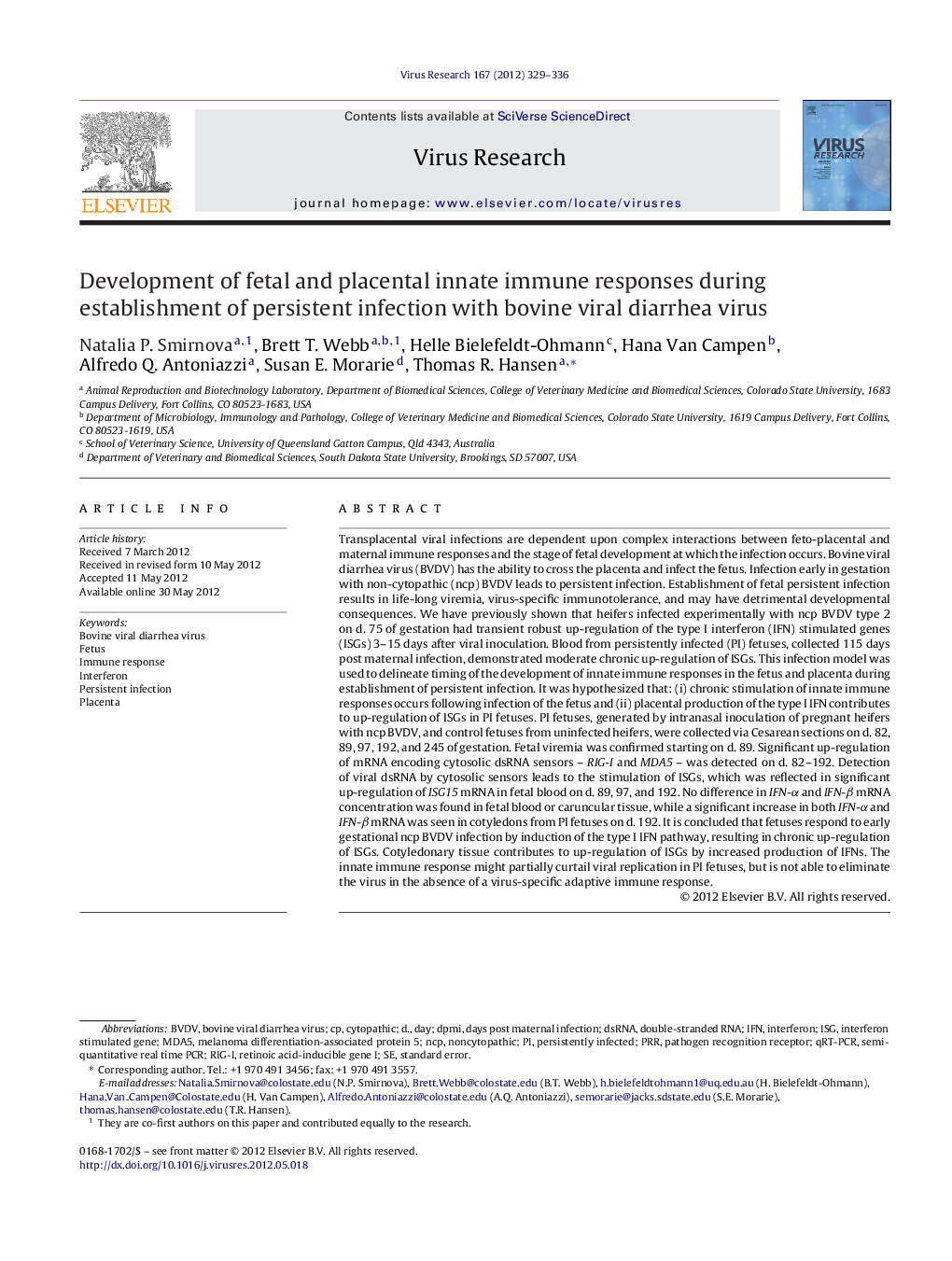| Article ID | Journal | Published Year | Pages | File Type |
|---|---|---|---|---|
| 6143079 | Virus Research | 2012 | 8 Pages |
Transplacental viral infections are dependent upon complex interactions between feto-placental and maternal immune responses and the stage of fetal development at which the infection occurs. Bovine viral diarrhea virus (BVDV) has the ability to cross the placenta and infect the fetus. Infection early in gestation with non-cytopathic (ncp) BVDV leads to persistent infection. Establishment of fetal persistent infection results in life-long viremia, virus-specific immunotolerance, and may have detrimental developmental consequences. We have previously shown that heifers infected experimentally with ncp BVDV type 2 on d. 75 of gestation had transient robust up-regulation of the type I interferon (IFN) stimulated genes (ISGs) 3-15 days after viral inoculation. Blood from persistently infected (PI) fetuses, collected 115 days post maternal infection, demonstrated moderate chronic up-regulation of ISGs. This infection model was used to delineate timing of the development of innate immune responses in the fetus and placenta during establishment of persistent infection. It was hypothesized that: (i) chronic stimulation of innate immune responses occurs following infection of the fetus and (ii) placental production of the type I IFN contributes to up-regulation of ISGs in PI fetuses. PI fetuses, generated by intranasal inoculation of pregnant heifers with ncp BVDV, and control fetuses from uninfected heifers, were collected via Cesarean sections on d. 82, 89, 97, 192, and 245 of gestation. Fetal viremia was confirmed starting on d. 89. Significant up-regulation of mRNA encoding cytosolic dsRNA sensors - RIG-I and MDA5 - was detected on d. 82-192. Detection of viral dsRNA by cytosolic sensors leads to the stimulation of ISGs, which was reflected in significant up-regulation of ISG15 mRNA in fetal blood on d. 89, 97, and 192. No difference in IFN-α and IFN-β mRNA concentration was found in fetal blood or caruncular tissue, while a significant increase in both IFN-α and IFN-β mRNA was seen in cotyledons from PI fetuses on d. 192. It is concluded that fetuses respond to early gestational ncp BVDV infection by induction of the type I IFN pathway, resulting in chronic up-regulation of ISGs. Cotyledonary tissue contributes to up-regulation of ISGs by increased production of IFNs. The innate immune response might partially curtail viral replication in PI fetuses, but is not able to eliminate the virus in the absence of a virus-specific adaptive immune response.
Graphical abstractDownload full-size imageHighlights⺠Fetal viremia is established one week after detection of BVDV RNA in blood of dams. ⺠RIG-I in fetal blood cells is up-regulated prior to establishment of fetal viremia. ⺠Up-regulation of IFN stimulated genes in fetal blood coincides with fetal viremia. ⺠Cotyledons contribute to induction of IFN stimulated genes in fetal persistent infection.
